Buying Guide for the Best Android Portable Chargers
Choosing the right Android portable charger can make a big difference in ensuring your devices stay powered up when you're on the go. Portable chargers, also known as power banks, come in various sizes, capacities, and with different features. Understanding the key specifications will help you select the best one for your needs.Capacity (mAh)Capacity, measured in milliampere-hours (mAh), indicates how much charge the power bank can store. This is important because it determines how many times you can charge your device before the power bank itself needs recharging. Lower capacity power banks (up to 5,000 mAh) are lightweight and suitable for occasional use, like giving your phone a quick boost. Mid-range capacities (5,000 to 10,000 mAh) are good for daily use and can charge a smartphone 2-3 times. High capacity power banks (10,000 mAh and above) are bulkier but can charge multiple devices or provide several charges for a single device, making them ideal for travel or extended periods without access to a power outlet. Choose a capacity based on how often you need to charge your devices and how many devices you need to charge.
Output Power (Wattage)Output power, measured in watts (W), determines how quickly the power bank can charge your device. This is crucial for efficiency, especially if you need a quick charge. Standard output power ranges from 5W to 18W or more. Lower wattage (5W) is slower and suitable for overnight charging. Mid-range wattage (10W to 15W) offers faster charging for most smartphones. High wattage (18W and above) supports fast charging technologies and is ideal for quickly charging modern smartphones and tablets. Consider your device's charging capabilities and how quickly you need it charged when selecting the output power.
Number of PortsThe number of ports on a power bank determines how many devices you can charge simultaneously. This is important if you have multiple devices or if you want to share the charger with others. Single-port power banks are compact and suitable for individual use. Dual-port power banks allow you to charge two devices at once, which is convenient for a phone and a tablet or sharing with a friend. Power banks with three or more ports are bulkier but can charge multiple devices simultaneously, making them great for families or group travel. Choose based on how many devices you need to charge at the same time.
Port TypesPort types on a power bank determine compatibility with your devices and charging speed. Common port types include USB-A, USB-C, and Micro-USB. USB-A is the standard port found on most power banks and is compatible with many devices. USB-C is becoming more common and offers faster charging and data transfer speeds. Micro-USB is typically used for charging the power bank itself. Some power banks also feature Lightning ports for Apple devices. Ensure the power bank has the right ports for your devices and consider USB-C for faster charging.
Size and WeightSize and weight are important for portability. A compact and lightweight power bank is easier to carry around, making it ideal for everyday use or travel. Smaller power banks (up to 5,000 mAh) are usually pocket-sized and very portable. Mid-sized power banks (5,000 to 10,000 mAh) offer a balance between capacity and portability. Larger power banks (10,000 mAh and above) provide more power but are bulkier and heavier. Consider how you plan to carry the power bank and balance your need for capacity with the convenience of portability.
Charging Speed (Input)Charging speed for the power bank itself, measured in watts (W), determines how quickly the power bank can be recharged. This is important if you need to recharge the power bank frequently. Standard input speeds range from 5W to 18W or more. Lower input speeds (5W) mean longer recharging times, which can be inconvenient if you use the power bank often. Higher input speeds (10W to 18W) allow for faster recharging, making the power bank ready to use again sooner. Consider how often you will need to recharge the power bank and choose one with a higher input speed if you need quick turnaround times.
Additional FeaturesAdditional features can enhance the functionality and convenience of a power bank. Some power banks come with built-in cables, which can be handy if you often forget to carry your charging cables. Others have LED indicators to show the remaining battery level, which helps you know when it's time to recharge the power bank. Some models offer wireless charging, which can be convenient for compatible devices. There are also power banks with solar charging capabilities, useful for outdoor activities. Consider which additional features would be beneficial for your specific needs and usage scenarios.


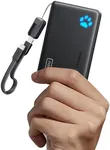
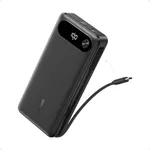

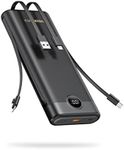
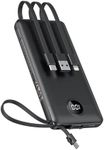

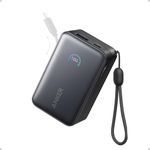



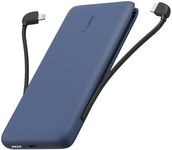
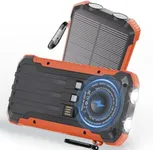
![Crave Travel PRO Power Bank with 13400 mAh [Quick Charge QC 3.0 USB + Type C with PD] Portable Battery Charger](https://images-proxy.bestreviews.guide/oU0VM2FLi6hOpfg9-xiULa6vvsk=/0x150/https://m.media-amazon.com/images/I/31j6h0+dJ3L._AC_CX679_.jpg)



